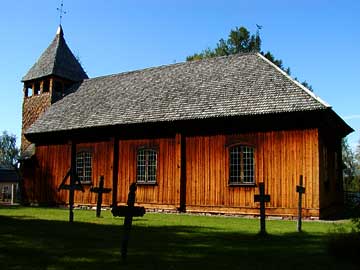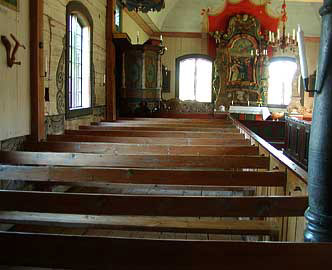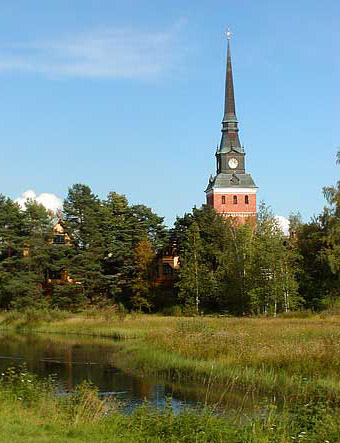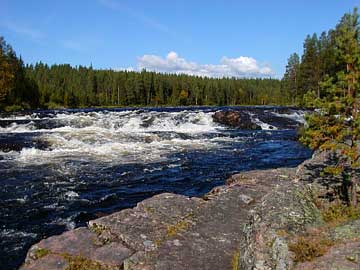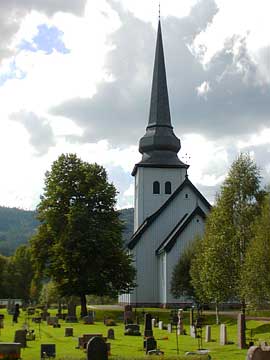|
We took full advantage of the wonderful weather and did a lot of camping. The first night we slept by a lake and were greeted by the scene above when we awoke.
While we saw many churches in our travels, this old wooden church (left) in Sarna was one of the more interesting. Although rebuilt several times, most of this was from the late 1600s. Inside, the pews were simply one wooden plank laid horizontally for the seats and another mounted vertically for the backs (below).
|
|
Also, at this time, much of the congregation lived far enough away that they could not travel both to and from church in one day, so many little huts were built near the church for the parishioners to spend the night (below).
|
|
|
Also, at this time, much of the congregation lived far enough away that they could not travel both to and from church in one day, so many little huts were built near the church for the parishioners to spend the night (below).
|
|
|
|
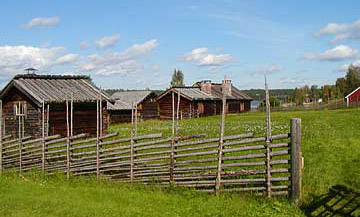
|
The picture at left also shows the most common type of fencing we saw in the country. Two thin straight branches are planted slightly apart for each “post.” Then other branches (or sometimes the barked-edgd remnants from the milling process) are angled between the sets of upright branches.
|
|
|
Near the center of the country sits the little town of Mora. The town is situated between lakes Siljan and Orsasjön and has been the most important town in the area from time immemorial. At right is a photo of the Mora church taken from just outside our tent. Mora is where the Dala horse (a symbol of Sweden) is carved, and is home to the Mora knife, Mora clock and Mora cracker.
|
|
|
|
|
We also spent some time in Idre, northwest of Mora, and passed these rushing rapids (left) as we left the area.
We found huts (below right) to be a popular alternative from camping in tents. These huts are available at most campsites and although basic (no running water) they do have beds (provide your own linen), electricity, and cooking facilities (usually). Almost all the campgrounds we stayed at had clean bathrooms with showers as well as central cooking facilities.
|
|
|
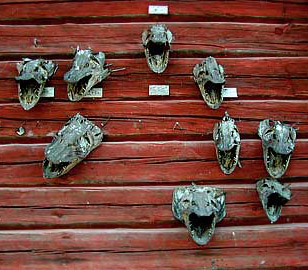
|
While at the campsite in Höljes, we found this dried fish-head collection on a nearby barn. Evidently the owner thought it was important to have a keepsake of his prizes. We are not sure what kind of fish these are (Jim thinks they are king cod), but obviously it is what is found locally. They appear to have a serious set of teeth so look quite ferocious.
|
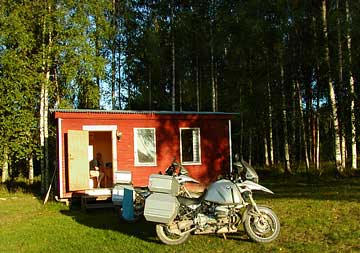
|
|
|
At right is a photo of a wooden church near Syssleback where we stopped for a rest after the muddy section of road construction one day (it only rained while we were on the section of road under construction, making a muddy mess of our newly-washed riding togs!). Most of the churches we saw were more or less this style, but the thing we found most interesting was the condition of the graveyards. No matter where we went, all the graveyards were very well kept. Each grave tended to have a small space for plants and each one had one or more flowering plants (no plastic flowers here!). The overall effect was very pleasing.
Although many people have said that central Sweden is flat, boring, and only woods, we found the area to be a delight. There are numerous back roads to be discovered and we found the scenery to be quite interesting with all the woods, lakes and rivers. It is a wonderful place to ride the bikes as the roads are great and there is very little traffic if you stay off the main highways.
|
|
|
|


